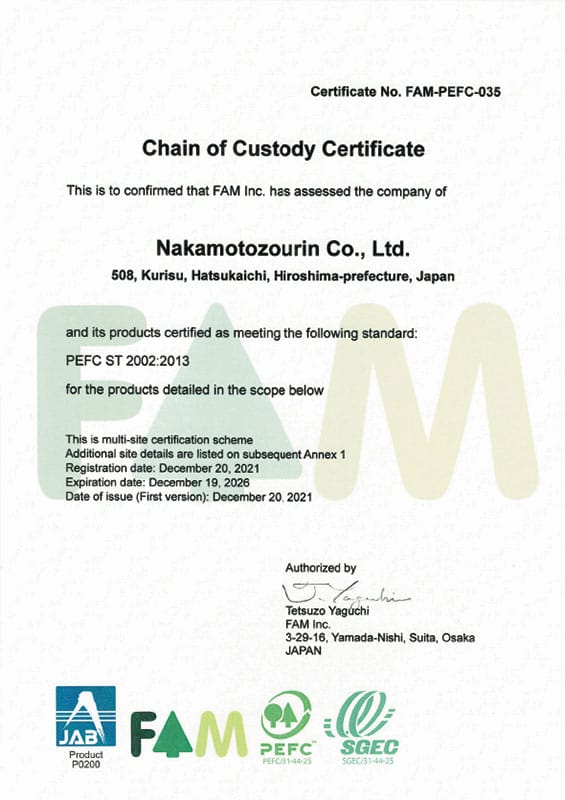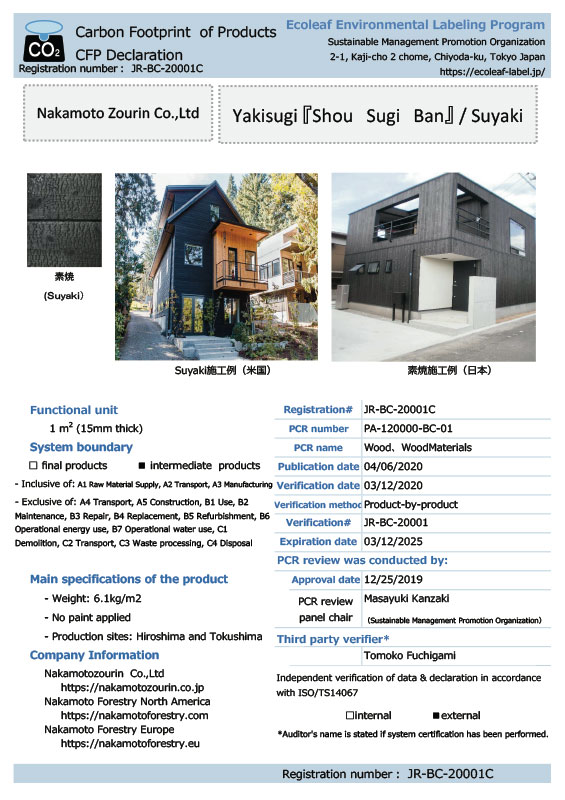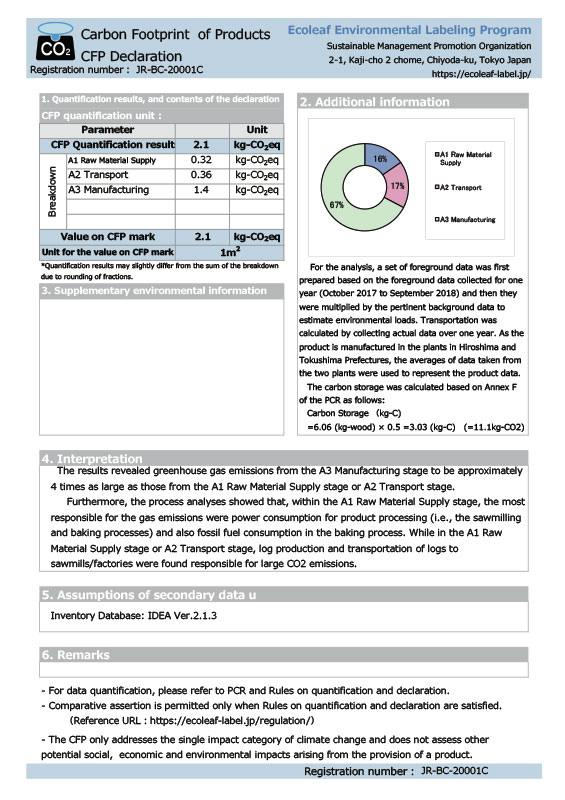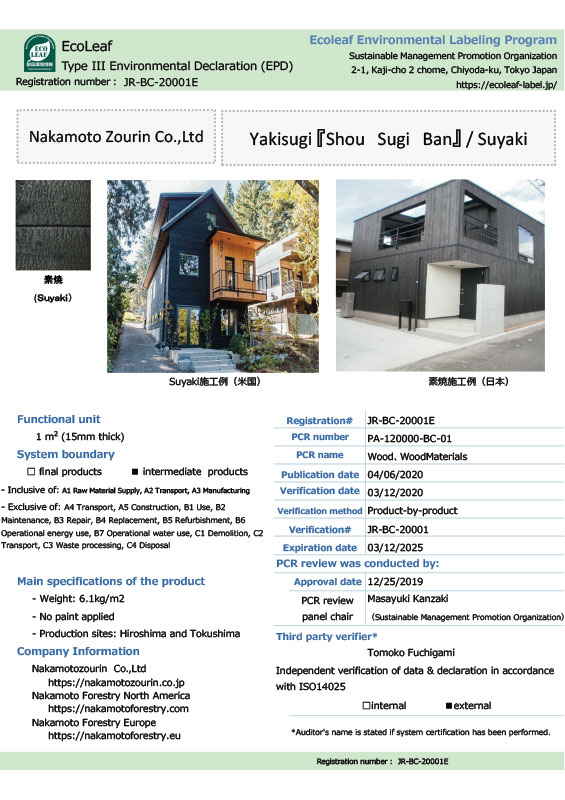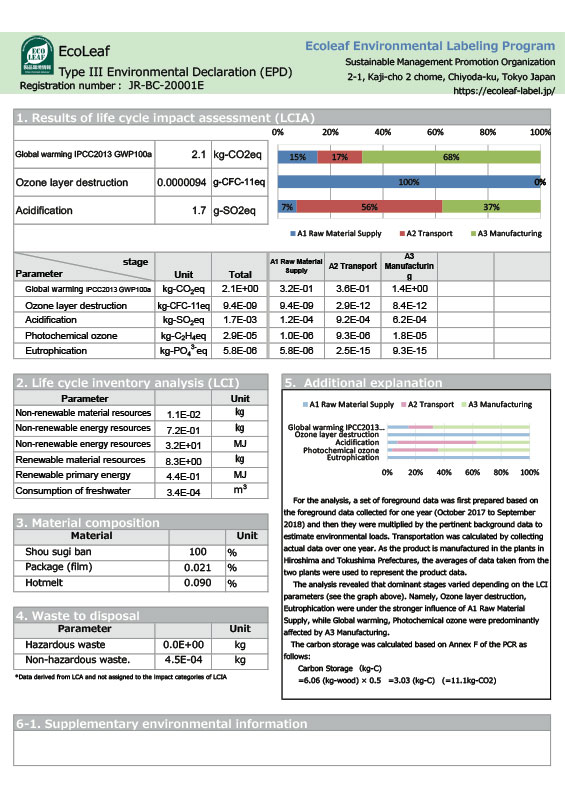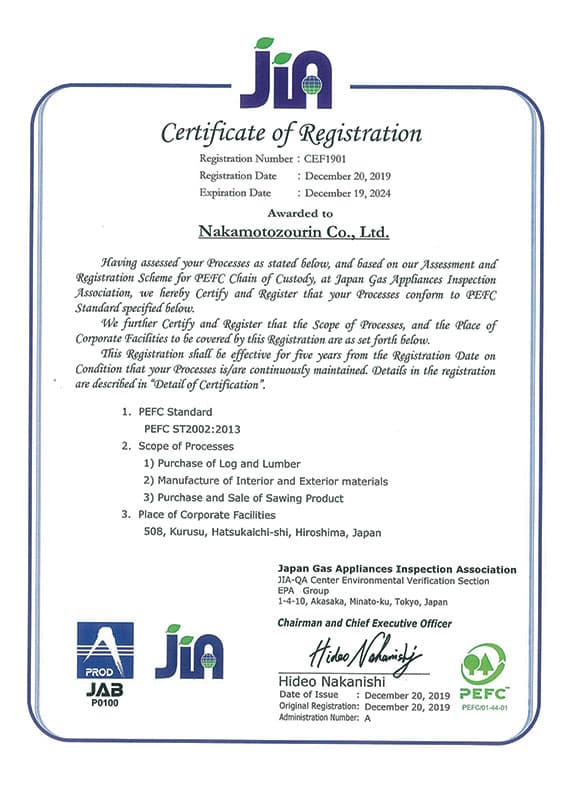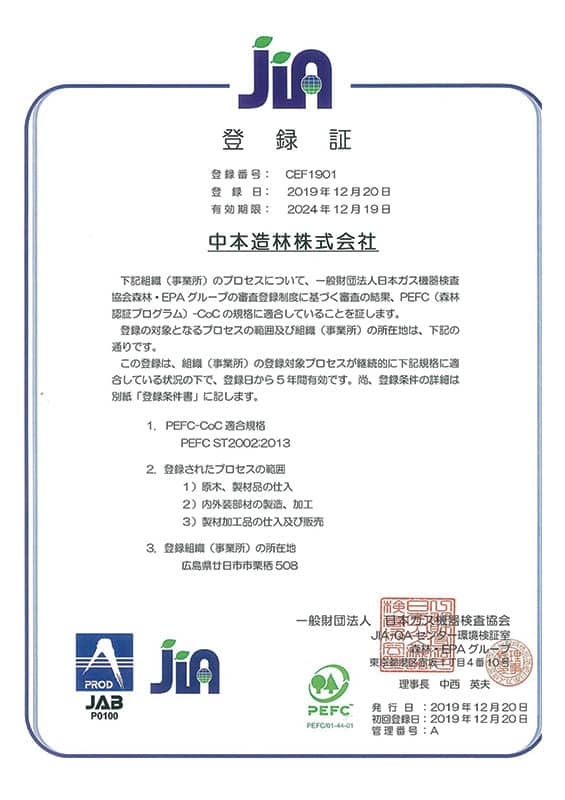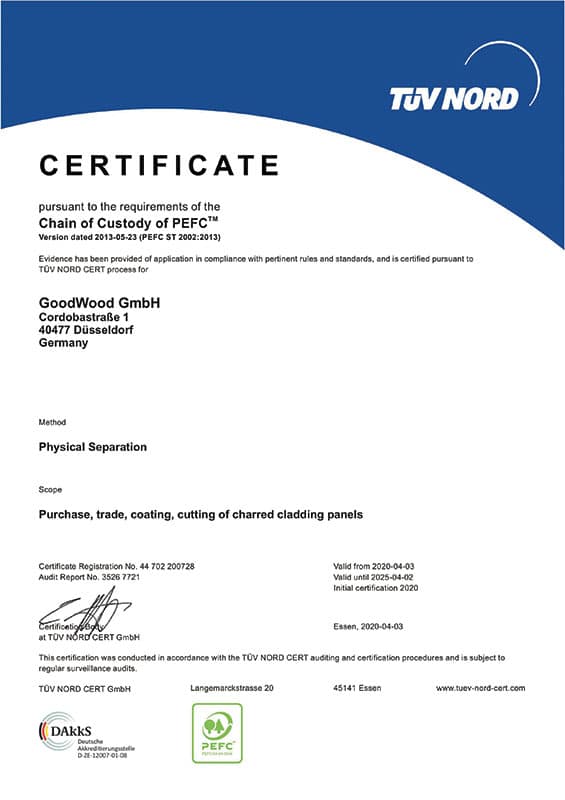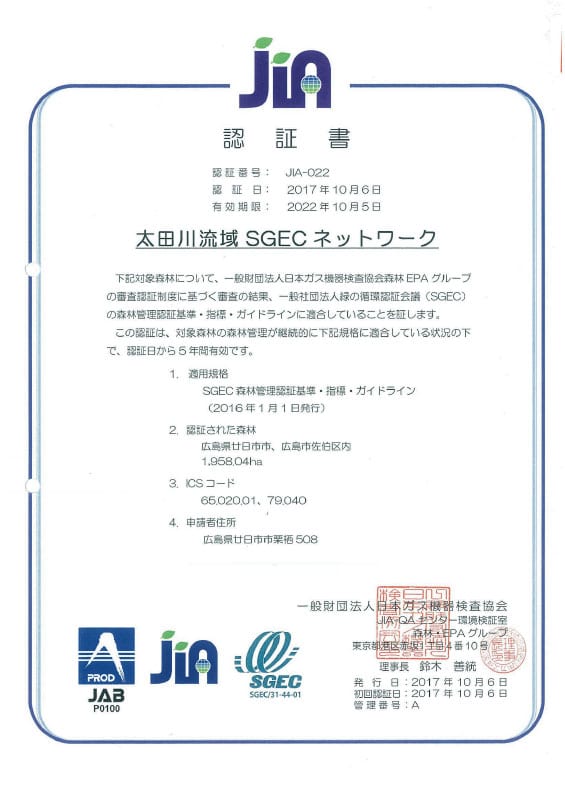SUSTAINABILITY
Sustainable construction
with Yakisugi
Sustainability – one of our core values at Nakamoto Forestry
Nothing outweighs the importance of sustainability in our era. With that in mind, we should be mindful to always act in a way that conserves resources for the Earth as well as for future generations. At Nakamoto Forestry, where we focus on the bigger picture and look ahead to future generations, this has always been imperative. And that’s why operating all our processes sustainably is such a top priority for us, to allow sustainable construction at the end of the process chain.
Table of Contents
Our parent company, Nakamoto Forestry in Japan, has already laid the groundwork. As a long-established and now third-generation family business, we own 2,000 hectares of forest, our own tree nursery, our own forester’s workshop and three sawmills. All forest stands are certified as sustainably managed (SGEC = Sustainable Green Ecosystem Council, PEFC = Programme for the Endorsement of Forest Certification Schemes) and subject to continuous monitoring.
For every tree felled,
a new one is plantedNakamoto Forestry
We manage all parts of the cycle, from felling the tree, to the planing, firing and brushing off the soot layer, in a controlled manner from a single source.
As all of these actions exemplify, what underpins our sustainable and eco-aware initiatives across generations is a set of fundamental beliefs that echo Japanese culture through and through and have been part of the Nakamoto Forestry roadmap for generations.
Japanese cypress versus “domestic” woods
With sustainable construction in mind, one question often posed to us is what precludes the use of domestic wood to produce Yakisugi, which would then eliminate the need to transport wood from Japan to Europe. To answer this, we have to first put the term “domestic wood” into its proper context.
Although the idea of cladding a facade using wood from local forest stands sounds appealing, the reality is often very different. So-called “native” woods often originate from Finland (Nordic spruce), for example, or Siberia (Siberian larch). Not every wood is even usable as a facade, let alone to manufacture Yakisugi.
First of all, the wood variety used should be as durable as possible by nature to withstand wind and weather, for decades if possible. The tree species proliferating in Germany central Europe are spruce and pine, which tend to have a durability grade of 3 to 4 (moderate to low). If you clad your exterior with wood of these grades, it may well need replacing after just ten to twenty years. Back in Japan meanwhile, Yakisugi facades dating back eighty years or more are not uncommon, because the Japanese cypress is classed as “durable” and, as such, outperforms most “domestic” wood varieties.
For more insights into why authentic Yakisugi is made solely from Japanese cypress, and how it outperforms other woods, visit our page “What is Yakisugi”.
Yakisugi and its carbon footprint – facts and figures
Another of our certificates is the Eco Leaf Label, which we received in 2019. This certificate follows global Life Cycle Assessment (LCS) standards and evaluates the CO2 emissions of our products. This evaluation showed that the production of our Yakisugi products, calculated on an end-to-end basis (i.e. including work in the forest, transport, sawmill and firing), produced a total of 2.1 kg CO2 equivalent per square meter. Given the premise that our Yakisugi wood binds about 1 ton of CO2 equivalent per cubic meter (which, for our products, equates to 15 kg CO2 per square meter), our products can help reduce CO2 by over 10 kg per square meter.
And finally, the emissions from all our container transports from Japan to Europe are fully offset by climate protection certificates, thus considered carbon-neutral and additionally contribute to the positive balance of our products.

 EU (English)
EU (English) DE (Deutsch)
DE (Deutsch) FR (Français)
FR (Français) UK (English)
UK (English) US Website
US Website